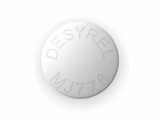How to start a pharmacy store
If you have a passion to help people and are interested in the healthcare industry, starting a pharmacy store can be a highly rewarding venture. However, it requires careful planning and execution to ensure its success. This step-by-step guide will walk you through the essential considerations and tasks involved in starting your own pharmacy store.
Research and Planning: The first step in starting a pharmacy store is to conduct a thorough research on the industry, market demand, and competition. You need to identify your target audience, understand their needs, and assess the competition in your area. This information will help you determine the viability of your business and formulate a solid business plan.
Legal and Regulatory Requirements: Before opening a pharmacy store, you must comply with the legal and regulatory requirements in your country or state. This includes obtaining the necessary licenses and permits, such as a pharmacy license and a Drug Enforcement Administration (DEA) registration. Additionally, you may need to meet specific zoning regulations and adhere to drug storage and labeling requirements.
Location and Store Setup: Choosing the right location for your pharmacy store is crucial for its success. Look for areas with a high population density and limited competition. Consider factors such as parking availability, accessibility, and proximity to healthcare facilities. Once you have secured a location, you can start setting up your store, including shelving units, display cases, and a point-of-sale system. Create a welcoming and organized layout to enhance the customer experience.
Inventory and Suppliers: Building a comprehensive inventory is essential for a pharmacy store. Identify the range of products you want to offer, including prescription drugs, over-the-counter medications, vitamins, and personal care products. Establish relationships with reputable suppliers and negotiate competitive pricing. It is important to regularly review and update your inventory to meet the changing needs of your customers.
Staffing and Training: As a pharmacy store owner, you need to hire qualified and knowledgeable staff members. Seek professionals with pharmacy degrees or certifications who can provide expert advice to your customers. Provide ongoing training to your staff to keep them updated with the latest medical information, regulations, and customer service skills.
Marketing and Promotion: To attract and retain customers, you need to implement effective marketing and promotion strategies. Develop a strong brand identity, create a website, and utilize social media platforms to reach your target audience. Offer loyalty programs, discounts, and personalized customer service to build a loyal customer base. Collaborate with healthcare professionals and community organizations to increase your visibility and credibility.
Continued Growth and Adaptation: The healthcare industry is constantly evolving, and it is important to stay updated with the latest trends and advancements. Adapt your services and product offerings to meet the changing needs of your customers. Continuously evaluate your business performance, collect customer feedback, and seek opportunities for growth and expansion.
Starting a pharmacy store requires careful planning, compliance with legal requirements, and a strong understanding of the market. By following this step-by-step guide, you can set up a successful pharmacy store that caters to the healthcare needs of your community.
Researching the Market
Before starting a pharmacy store, it is crucial to thoroughly research the market in order to understand the current trends, competition, and target customer base. Conducting market research will help you make informed decisions and develop a successful business plan.
Identify your target market: Begin by identifying the specific target market for your pharmacy store. Determine the demographics, such as age, gender, and location, that are most likely to need your products and services. Understanding your target market will help you tailor your offerings to meet their needs and preferences.
Analyze the competition: Research and analyze the competition in your area. Identify existing pharmacy stores and analyze their strengths, weaknesses, and market positioning. This will help you identify gaps in the market and develop strategies to differentiate your store from the competition.
Assess market trends: Stay updated on the latest trends and developments in the pharmaceutical industry. This includes monitoring changes in regulations, new products and services, and emerging technologies. Understanding the current market trends will help you make informed decisions and adapt your business model accordingly.
Conduct a SWOT analysis: A SWOT analysis involves identifying the strengths, weaknesses, opportunities, and threats of your pharmacy store. This analysis will help you identify areas where you have a competitive advantage and areas that may pose challenges. It will also help you identify opportunities for growth and areas where you need to improve.
Collect customer feedback: Interact with potential customers and collect feedback to understand their needs, preferences, and expectations. This can be done through surveys, focus groups, or online reviews. Customer feedback will provide valuable insights that can help you tailor your offerings and improve customer satisfaction.
In summary, researching the market is a crucial step in starting a pharmacy store. By identifying your target market, analyzing the competition, assessing market trends, conducting a SWOT analysis, and collecting customer feedback, you can gather valuable insights and develop a successful business strategy.
Creating a Business Plan
Research and Analysis
Before starting a pharmacy store, it is crucial to create a comprehensive business plan. This plan should start with thorough research and analysis of the local market. It is important to identify the demand for pharmaceutical products in the area and understand the competition. Analyze the target market, including demographics, purchasing power, and trends in the pharmaceutical industry. Conduct a financial analysis to determine the initial investment required and projected revenue.
Goals and Objectives
A business plan should clearly define the goals and objectives of the pharmacy store. These goals may include becoming a trusted healthcare provider in the community, increasing market share, or expanding the product range. Objectives should be specific, measurable, achievable, relevant, and time-bound. For example, an objective could be to achieve a certain percentage of market share within the first year of operation.
Marketing and Sales Strategy
Developing a strong marketing and sales strategy is essential for the success of a pharmacy store. Identify the target audience and tailor marketing efforts to reach them effectively. This may include utilizing digital marketing channels, such as social media and online advertising, as well as traditional methods like print advertisements or community outreach programs. Create a plan for pricing, promotions, and discounts to attract and retain customers.
Operational Plan
The operational plan outlines how the pharmacy store will be managed on a day-to-day basis. This should include details such as store layout, inventory management procedures, staffing requirements, and quality control measures. Consider any legal and regulatory requirements that need to be followed, such as obtaining the necessary licenses and certifications.
Financial Projections
Include financial projections in the business plan to demonstrate the potential profitability of the pharmacy store. This should include startup costs, anticipated revenue, and expenses. Create a cash flow forecast and break-even analysis to determine the viability of the business. Consider seeking professional advice from an accountant or financial advisor to ensure accuracy and reliability of the financial projections.
In conclusion, creating a business plan is critical when starting a pharmacy store. Thorough research, setting clear goals and objectives, developing a marketing strategy, defining operational procedures, and preparing financial projections are key components of a successful business plan. This document will serve as a roadmap for the pharmacy store and help guide decision making and growth in the future.
Securing Financing and Finding a Location
Securing Financing:
Starting a pharmacy store requires a significant amount of capital, so securing financing is essential. One option is to approach banks or other financial institutions to apply for a business loan. The loan amount can be used to cover the expenses for purchasing inventory, equipment, and paying for the store's operational costs. It is important to prepare a comprehensive business plan and financial projections to showcase the potential profitability of the pharmacy store and increase chances of securing the loan.
Another financing option is to find investors who are willing to fund the pharmacy store. This can be done by networking within the healthcare industry and attending investor events or conferences. Investors can provide not only the necessary funding but also valuable industry knowledge and connections to help the pharmacy store thrive.
Finding a Location:
Choosing the right location for the pharmacy store is crucial for its success. It is important to consider factors such as demographics, competition, and accessibility when selecting a location. Ideally, the store should be situated in an area with high foot traffic and a significant population to attract a large customer base.
Additionally, it is important to assess the competition in the area. Conduct market research to identify other nearby pharmacies and analyze their offerings, prices, and target customer base. This information can help in positioning the pharmacy store to differentiate itself and attract customers.
Accessibility is another important factor to consider. Ensure that the location has ample parking space and is easily accessible by public transportation. This will make it convenient for customers to visit the store and increase the chances of repeat business.
Once a potential location is identified, negotiate the terms of the lease with the property owner. It is advisable to consult with a real estate attorney to review the lease agreement and ensure that it meets the specific needs of the pharmacy store.
Obtaining Licenses and Permits
1. Determine the Required Licenses and Permits
Before starting a pharmacy store, it is essential to determine the licenses and permits that are required by your country, state, or local government. These requirements may vary depending on the location and the scope of your pharmacy business. Some common licenses and permits you may need to obtain include:
- Pharmacy License
- Business License
- Drug Enforcement Administration (DEA) Registration
- State Controlled Substance License
- Pharmacist License
- Occupancy Permit
Research the specific requirements and regulations in your area to ensure compliance with all necessary licenses and permits.
2. Prepare the Required Documents
Once you have identified the licenses and permits required, you will need to prepare the necessary documents for the application process. These may include:
- Completed application forms
- Proof of education and qualifications (such as pharmacy degree and pharmacist license)
- Business formation documents (such as articles of incorporation or partnership agreement)
- Proof of liability insurance
- Financial statements or business plan
- Lease agreement or proof of property ownership
Make sure to gather all the required documents and keep copies for your records.
3. Submit the Applications and Pay Fees
After preparing the required documents, you will need to submit the license and permit applications to the appropriate government agencies. This may include the state pharmacy board, local licensing office, and DEA. Along with the applications, you will likely need to pay the associated fees, which can vary depending on the type of license or permit.
Follow the instructions provided by each agency and ensure that you meet all the requirements and deadlines for the applications.
4. Wait for Approval and Inspections
Once the applications are submitted, the licensing authorities will review your documents and may conduct inspections of your pharmacy store. They will evaluate factors such as the store's layout, storage facilities for drugs, and compliance with regulations. This process can take several weeks to months, so be prepared for some waiting time.
During the inspection, make sure that your store meets all the necessary requirements and maintain proper records and documentation for any prescriptions or controlled substances handled.
Upon receiving approval from the relevant authorities, you can then proceed to open your pharmacy store and start serving customers.
Establishing Supplier Relationships
When starting a pharmacy store, one of the most crucial aspects is establishing strong relationships with suppliers. Finding reliable suppliers and building a good working relationship with them is essential for the success of your business.
Research and Identify Potential Suppliers
Begin by researching and identifying potential suppliers for your pharmacy store. Look for suppliers who offer a wide range of pharmaceutical products and have a good reputation in the industry. Consider factors such as product quality, pricing, delivery time, and customer support when evaluating potential suppliers.
Reach out to Suppliers
Contact the identified suppliers and express your interest in establishing a partnership. Provide them with information about your pharmacy store and explain your specific requirements. Ask for their product catalog, price list, and any additional information you need to make an informed decision. Be prepared to negotiate terms and conditions, such as pricing and minimum order quantities.
Evaluate Supplier Reliability
Before finalizing a partnership, it is crucial to evaluate the reliability of potential suppliers. This can be done by checking their track record with other pharmacies or reading online reviews. Look for suppliers who have a proven track record of delivering products on time, maintaining consistent quality, and providing excellent customer service. This will ensure that you can rely on them to meet the needs of your pharmacy store and keep your customers satisfied.
Establish Partnership Agreement
Once you have identified reliable suppliers, it is important to establish a formal partnership agreement. This agreement should outline the terms and conditions of the partnership, including product pricing, payment terms, delivery schedules, and any additional services or support that will be provided. Having a clear agreement in place will help prevent any misunderstandings or conflicts in the future.
In conclusion, establishing strong supplier relationships is crucial for the success of your pharmacy store. By carefully researching and selecting reliable suppliers, you can ensure a steady supply of high-quality pharmaceutical products that meet the needs of your customers.
Marketing and Promoting Your Pharmacy Store
1. Develop a strong brand identity:
Creating a strong brand identity for your pharmacy store is crucial for marketing and promoting your business. This includes designing a logo, choosing a color scheme, and developing a consistent brand message. Your brand identity should communicate the values and unique selling points of your store, and should be reflected in all your marketing materials.
2. Utilize online marketing strategies:
To reach a wider audience and attract customers to your pharmacy store, it's important to leverage online marketing strategies. This could include creating a website that showcases your services and products, optimizing your website for search engines, and utilizing social media platforms to engage with potential customers. You can also consider running online advertisements or partnering with relevant healthcare websites and blogs.
3. Offer promotions and discounts:
One effective way to attract customers and encourage repeat visits to your store is by offering promotions and discounts. Consider implementing loyalty programs, offering special discounts for first-time customers, or creating bundle deals for popular products. These promotions can be marketed through your website, social media channels, and in-store signage to create a sense of urgency and encourage customers to take advantage of the offers.
4. Build relationships with healthcare professionals:
Developing strong relationships with healthcare professionals in your area can be mutually beneficial. Reach out to local doctors, clinics, and hospitals to establish partnerships and offer your services as a trusted pharmacy store. This could involve providing educational resources, hosting informational events, or offering special discounts for healthcare professionals. By building these relationships, you can gain referrals and establish your pharmacy store as a trusted provider of healthcare products and services.
5. Monitor and respond to customer feedback:
Listening to your customers and addressing their needs is essential for the success of your pharmacy store. Regularly monitor customer feedback through online reviews, social media comments, or surveys. Take the time to respond to both positive and negative feedback, addressing any concerns or issues raised by customers. This will help build trust and loyalty with your customer base, and also provides valuable insights for improving your products and services.
6. Network within the local community:
To promote your pharmacy store and establish a strong presence within the local community, consider participating in local events and organizations. Attend health fairs, sponsor community sports teams or events, or offer free health screenings at local senior centers or schools. By actively engaging with the community, you can increase awareness of your store and forge connections with potential customers.
Follow us on Twitter @Pharmaceuticals #Pharmacy
Subscribe on YouTube @PharmaceuticalsYouTube





Be the first to comment on "How to start a pharmacy store"